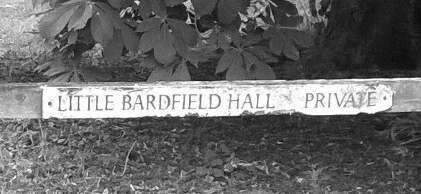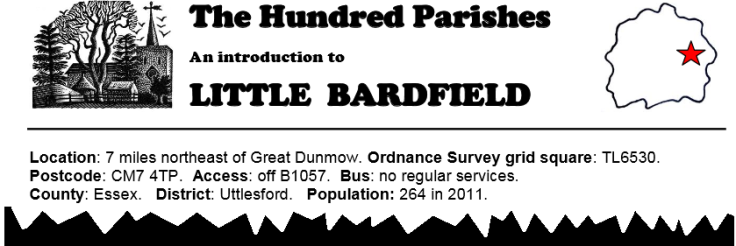I slammed down the family tree and adjusted my pince-nez. No way! There is no way that one of our Creeds, rural Somerset farming stock by their nature, could have passed through some magic enriching device in London and come out the other side as Lord of the Manor. Squire at home at Little Bardfield Hall, Essex? I don’t think so.

And that has pretty much been my angle ever since. It is 20 years since I saw that tree. Anyone who has watched My Secret Family will know families can indeed shed their wings and soar upwards economically, and in certain circumstances this change can be lasting.
Richard Creed, Lord of the Manor of Little Bardfield, was born in London in 1847 and orphaned quite soon after. In a change to Dickens’s script, family friends at Malvern took him in and got him articled to an architect. He had a successful career in London but had a genuine love of old buildings, none older than the Elizabethan era’s finest manor house, Little Bardfield Hall.

Creed’s obituary mentions his Somerset origins, and his grandmother visiting the crowded Marylebone rooms in the 1851 census confirms that. Like Marianne Mellieux, whose needlework is apparently in Thaxted, grandma Creed was from Glastonbury. Her husband’s burial at 37 means he simply must be the Creed baptised at West Pennard 1781, which does indeed make him a cousin.
The Hall’s grounds stretch on and on forever. The Hundred Parishes Society believe this Bardfield has changed little since a pre-war Happy Days film, if anything it’s become remoter yet with the railway gone from the market town.

… a magnificent 15th Century Manor House nestled in a sixteen acre parkland setting. The grounds include a Medieaval wild flower meadow, beautiful orchards filled with wildlife, four spring-fed lakes that were man-made by Norman monks, and an adjacent Saxon church.
The Saxon church has significant components from Saxon times, given as 1042 inside the building, including most of the wall. There’s an area where the sacrament was placed inside the wall during Lent, which I didn’t photograph.
More photos of the church are at Tricia’s Tales: http://belfiebird.blogspot.co.uk/2014/10/well-it-didnt-rain-so-off-to-little.html
To see the lanes and flowers, and the fabled oxslip of the 1938 movie clip, browse into the gallery here presented.



















